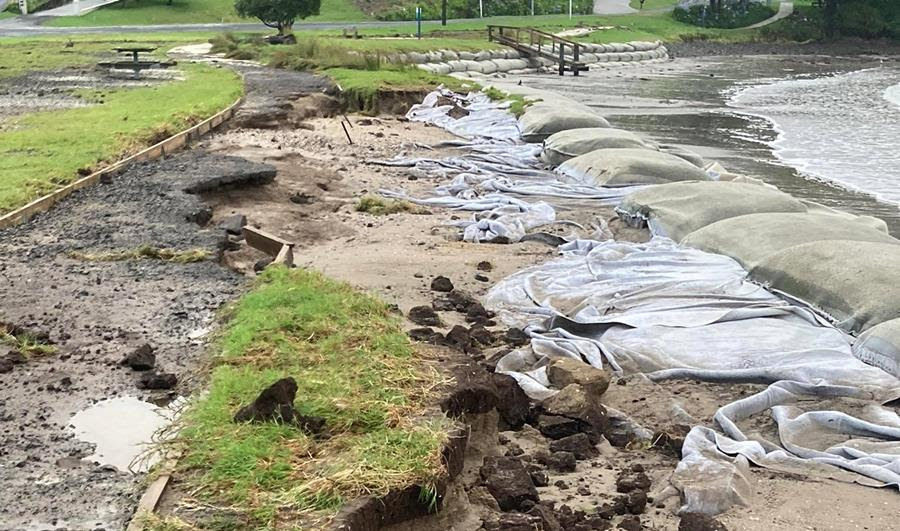A new partnership structure to begin the roll-out of the Shoreline Management project has been approved by the Thames-Coromandel District Council.
Council said the new shoreline partnership structure would continue its existing arrangement and “productive and positive relationship” with Pare Hauraki, and it would provide an opportunity to include Waikato Regional Council.
“The group is tasked with prioritising actions from the shoreline management pathways, and scoping projects to decide which will be implemented first,” council said.
“The prioritisation process will account for any increased urgency, among the initial priorities is more detailed design work and pricing on protection options for Thames.
“In some cases recent storm events will have already triggered thresholds for action… the trigger for action in Thames had already been reached before these recent events.”
Council said key projects to protect and improve resilience for its communities on the east coast will also be assessed by the group.
“The scoping and prioritisation phase is expected to be completed this calendar year, and the results will inform council’s 2024-2034 Long Term Plan,” council said.
Mayor Len Salt said it was vital that council kept an eye on the long-term resilience to erosion and sea level rise even as the district deals with the challenges of short-term weather events.
“The type of impacts we’re seeing from Cyclone Gabrielle are precisely why this project was undertaken, and why it was so comprehensive,” he said.
Project lead and Asset Planning Manager Amon Martin said the group would look into long-term options to reduce the impacts of erosion and storm-surge for coastal communities.
“We know that our coastline, particularly in places like Thames, is extremely vulnerable to erosion and storm-surge from sea level rise, even though it didn’t take a direct hit in the cyclone this time around,” he said.
“We’ll be looking at things like longer-term options like managed retreat for some of the district’s communities, building a new sea wall for some areas, and how we can reduce the number of properties that are exposed to hazards.”
Mr Martin said Ngāti Maru would also have a key role in the project work for Thames, one part of its extensive maritime rohe.




